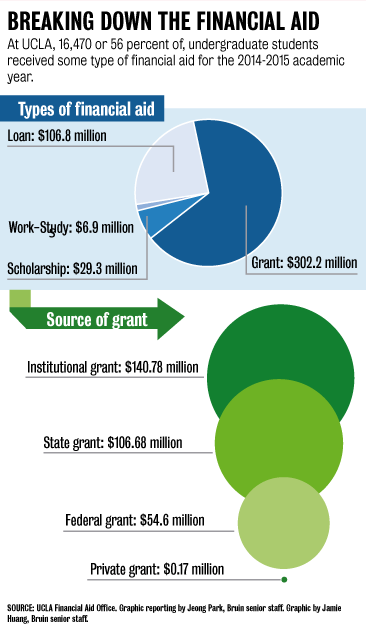News
Feb. 4, 2015 2:07 a.m.Decrease in state funding leads to higher student debt
Ahrav Dutta’s schedule for the most recent summer followed: graveyard shift at Jack-in-the-Box until 6 a.m. Classes. Work before and after classes. Gym. Work. Study.
In the school year, Dutta works seven days a week, splitting his 52-hour work week between his three jobs.
By Mila Abushmaies
Opinion
Jan. 15, 2015 12:00 a.m.Chloe Lew: Nonresident students should not be used as financial crutches for UC
As a native Californian, I’ve always felt shamelessly privileged with the best – the beautiful West Coast, eternal sunshine, celebrity neighbors and about $23,000 less in tuition fees at the University of California than nonresidents.
By Chloe Lew
News
Jan. 14, 2015 2:55 a.m.UCRP’s unfunded liability proves burdensome to employees, taxpayers
The University of California Retirement Plan, long-touted as a vital benefit received through UC employment, has become a strain on the University’s financial health and a backseat driver of the system’s fiscal policy.
By Kevin Truong
Editorials
Jan. 8, 2015 1:26 a.m.Editorial: Master Plan requires regulatory body for its enforcement
No attempt at reforming the Master Plan for Higher Education in California will matter unless legislators and higher education leaders view it as more than a guideline that they can ignore.
By Editorial Board
Editorials
Jan. 8, 2015 1:22 a.m.Editorial: Master Plan should mandate state contributions, pension funding
An update to the Master Plan for Higher Education in California must establish realistic expectations for the state’s contribution to higher education and hold the legislature accountable to its responsibility to fund higher education in California.
By Editorial Board
Editorials
Jan. 8, 2015 1:14 a.m.Editorial: Master Plan, not students, should adjust for inflation
The Master Plan for Higher Education in California is a long, winding document that aims to establish the economic future of public education. Yet, it fails to responsibly account for one of the most basic economic forces: inflation.
By Editorial Board
Opinion
Jan. 8, 2015 12:05 a.m.Kunal Patel: Master Plan must account for higher resident demand
Once upon a time, California’s public higher education system was the golden crown of all the services that the state provided. But without proper maintenance, public higher education today vaguely resembles the ideals that were envisioned by the 1960 Master Plan for Higher Education in California.
By Kunal Patel

searching for more articles...






